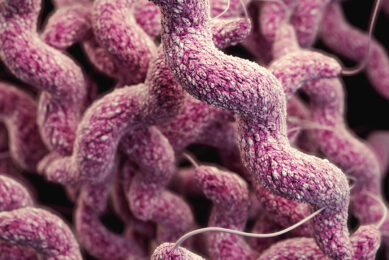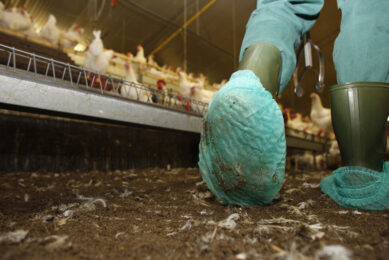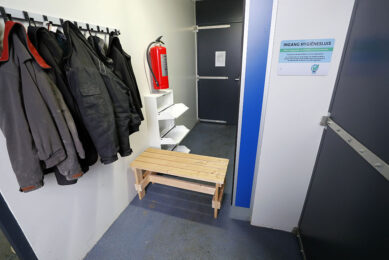Mild weather and rain increases risk of Campylobacter in chickens
A new doctoral thesis shows that heavy rain and average temperatures over 6°C during the breeding period increase the risk of broilers becoming infected by Campylobacter bacteria.
Campylobacter is currently the most frequently reported cause of bacteria-induced diarrhea in Europe, including in Norway. Chicken meat is considered to be one of the sources of infection. Reducing the number of infected chicken flocks will therefore result in a lower incidence of infection in humans.
As part of her doctoral research, Malin Jonsson has studied the areas in Norway where chicken flocks are at the highest risk of infection. Some areas in the counties of Hedmark and South Trøndelag were shown to have a particularly high infection risk. The research study also studied a number of risk factors, and the factors related to climate were shown to be important.
The analyses included daily measurements of temperature and precipitation correlated to each chicken flock. The results of these analyses revealed that the risk of the chicken pen becoming infected by Campylobacter increased successively as the daily mean temperature rose to over 6 degrees centigrade. Heavy precipitation during the breeding period also contributed towards an increase in the risk of infection.
The findings related to temperature are particularly interesting because earlier studies from for example Denmark have shown that flies help to introduce infection into the chicken pen, and flies are at their most active in temperatures over 6 to 8 degrees centigrade. One important measure to prevent infection will therefore be to prevent flies coming in contact with the chickens.
Jonsson also discovered that the farms which used their own water sources to provide their livestock with water were at a greater risk of infection than those connected to the public water supply. This would indicate that it is important that the broilers have access to drinking water of a consistently high quality in order to avoid them becoming infected. The source of drinking water is probably especially vulnerable in heavy rain. Campylobacter bacteria from the area around the farm or from neighbouring farms with livestock can help to pollute the water.
Jonsson’s thesis also presents results from analyses of so-called “clustering in space and time,” whereby Campylobacter bacteria from both humans and broilers were examined. These analyses demonstrated that common factors in the surroundings probably affect the spread of infection amongst both humans and chickens.
The research project was financed by theNorwegian Research Council and carried out at The National Veterinary Institute from 2006-2010.
Source: Science Daily













